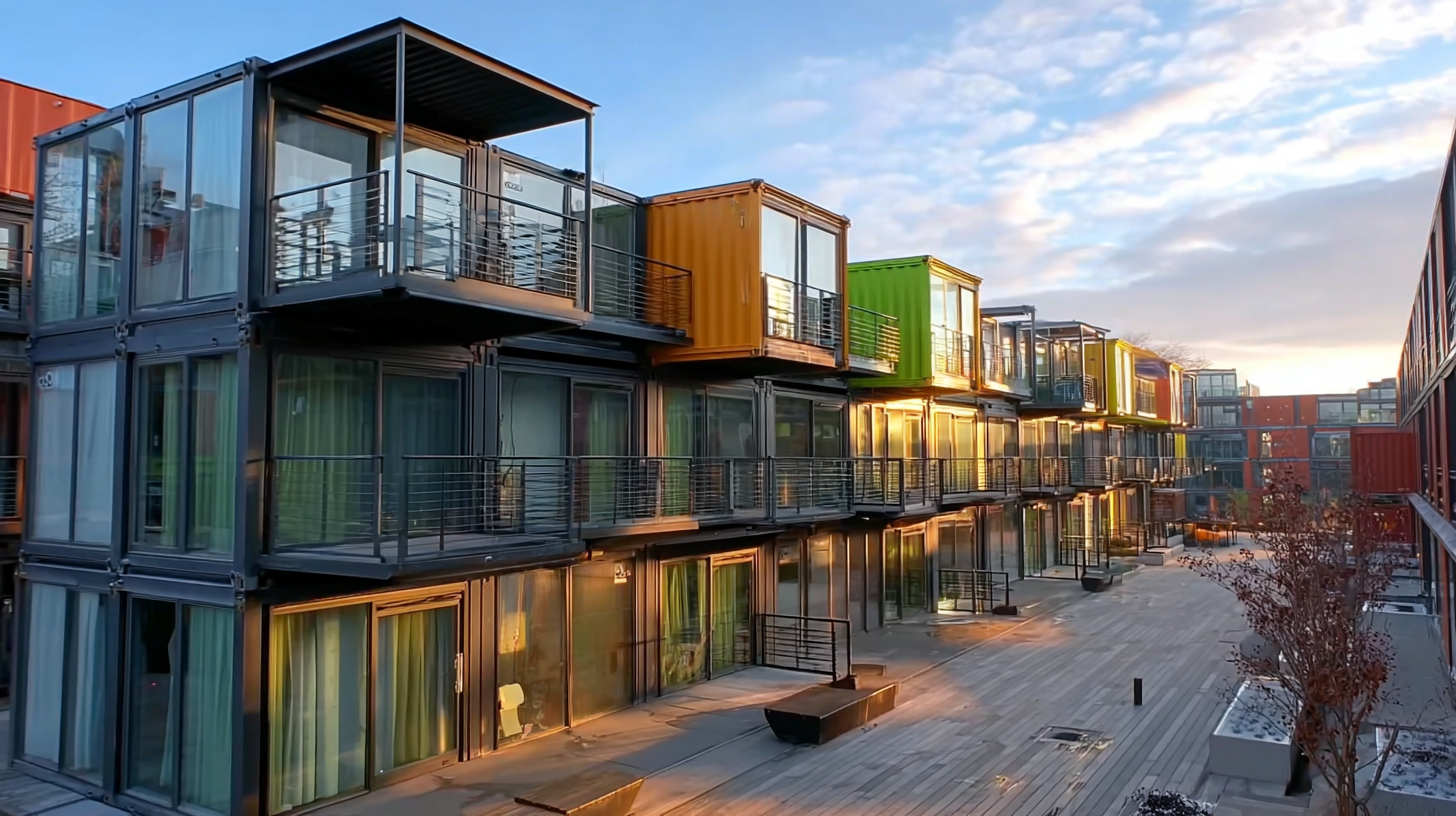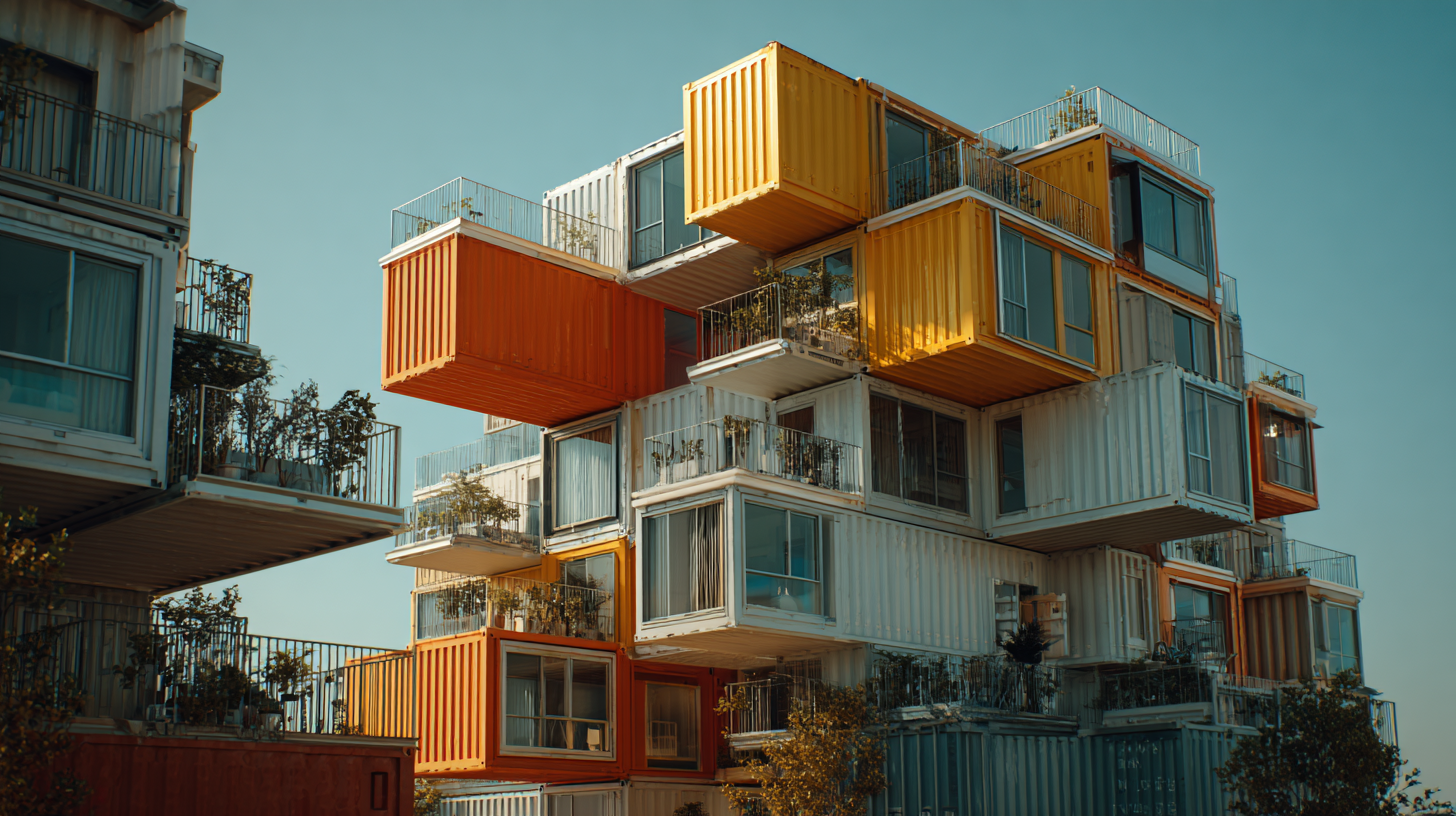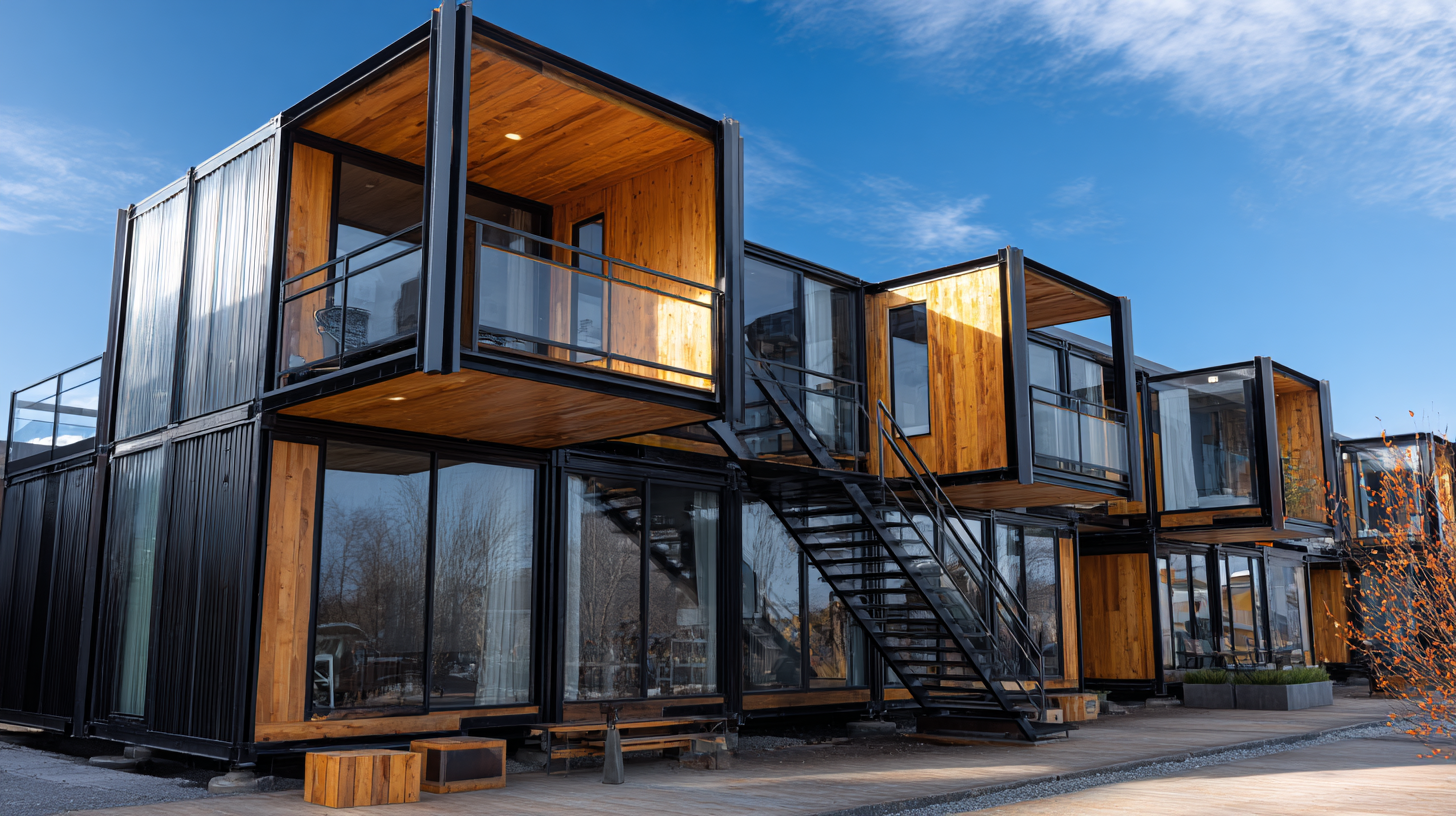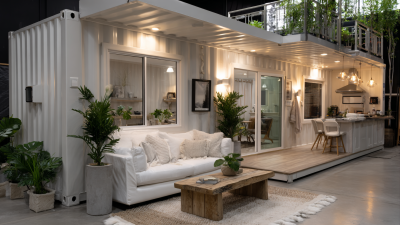Discovering the Future of Living: The Rise of Container Condos as Eco-Friendly Housing Solutions
As urban populations continue to swell, the demand for sustainable and innovative housing solutions is more pressing than ever.
 Container condos are emerging as a leading choice in eco-friendly housing, leveraging recycled shipping containers to create efficient living spaces.
According to a report by McKinsey & Company, the construction industry is responsible for approximately 39% of global carbon emissions, underscoring the urgent need for greener alternatives.
Container condos not only provide a creative use of materials but also offer affordability and speed of construction, addressing both environmental and economic concerns.
The World Economic Forum notes that container homes can be built 40% faster than traditional structures while generating 75% less construction waste.
By embracing the container condo revolution, we can rethink urban living and pave the way for a more sustainable future.
Container condos are emerging as a leading choice in eco-friendly housing, leveraging recycled shipping containers to create efficient living spaces.
According to a report by McKinsey & Company, the construction industry is responsible for approximately 39% of global carbon emissions, underscoring the urgent need for greener alternatives.
Container condos not only provide a creative use of materials but also offer affordability and speed of construction, addressing both environmental and economic concerns.
The World Economic Forum notes that container homes can be built 40% faster than traditional structures while generating 75% less construction waste.
By embracing the container condo revolution, we can rethink urban living and pave the way for a more sustainable future.
Understanding Container Condos: What They Are and How They Work
Container condos are rapidly emerging as a contemporary and eco-friendly housing solution. These innovative living spaces are constructed from repurposed shipping containers, offering a sustainable alternative to traditional construction methods. Each container is designed as an efficient living unit, often featuring modern amenities and environmentally conscious designs. The use of existing materials not only reduces waste but also minimizes the carbon footprint associated with new construction.
However, the rise of container condos has not been without challenges. Recent developments have seen plans for container condo projects scrapped in various locations, such as a seven-story structure in Colfax and another proposal in Brookland. Despite these setbacks, preliminary permits for new container housing projects are still being filed, indicating that the interest in this unique housing format remains strong. For instance, a new project at 6200 Shattuck Avenue in Oakland promises to revitalize the area with its innovative design. As cities continue to address housing shortages and environmental concerns, container condos may play a critical role in shaping the future of urban living.

Benefits of Container Condos: Economical and Eco-Friendly Living
 Container condos have emerged as a revolutionary housing solution, combining affordability with sustainability. According to a report by the World Economic Forum, the construction sector is responsible for approximately 38% of global carbon emissions, making eco-friendly housing solutions more necessary than ever. Container condos repurpose existing shipping containers, significantly reducing construction waste and energy consumption. This innovative approach not only addresses housing shortages but also minimizes the environmental footprint associated with traditional building materials.
Container condos have emerged as a revolutionary housing solution, combining affordability with sustainability. According to a report by the World Economic Forum, the construction sector is responsible for approximately 38% of global carbon emissions, making eco-friendly housing solutions more necessary than ever. Container condos repurpose existing shipping containers, significantly reducing construction waste and energy consumption. This innovative approach not only addresses housing shortages but also minimizes the environmental footprint associated with traditional building materials.
In terms of economic benefits, a study published by the National Association of Home Builders indicates that container homes can be constructed for 30-40% less than conventional homes. This substantial cost reduction is particularly attractive to first-time homebuyers and those looking for investment opportunities in an increasingly expensive housing market. Moreover, container condos can be designed to be energy-efficient, with features such as solar panels and effective insulation, resulting in lower utility bills. As urban areas continue to grow, the adaptability and economic feasibility of container condos present a compelling case for their rise as a viable alternative for modern living.
Design Innovations: Transforming Shipping Containers into Stylish Homes
The rise of container condos is revolutionizing the concept of modern living, combining sustainability with stylish design. Shipping containers, once considered mere transportation units, are being ingeniously transformed into innovative homes that cater to various tastes and lifestyles. Their modular nature allows for versatile configurations, and the external aesthetic can be customized with vibrant colors, eco-friendly finishes, and striking architectural elements. This fusion of functionality and design creates not only beautiful spaces but also minimizes the environmental footprint.
**Tips for Designing Your Container Condo:** When considering a container home, think about maximizing natural light with large windows or skylights to create a bright and open atmosphere. Incorporate green roofing or solar panels to enhance energy efficiency and further reduce your ecological impact. Additionally, prioritize sustainable materials in your interior design, such as reclaimed wood or low-VOC paint, to ensure a healthy living space.
Furthermore, layout is key in container design. Open-concept living areas can make a small space feel expansive, while strategic use of furnishings—like multi-functional pieces—can optimize every square foot. An outdoor space, like a deck or garden, can also extend your living area, providing a seamless connection to nature while enhancing the overall appeal of your container condo.
Building Your Own Container Condo: A Step-by-Step Guide
Building your own container condo can be a rewarding and innovative way to embrace eco-friendly living. To start, it's essential to choose the right shipping container. Look for containers that are structurally sound and free from significant rust or damage. Also, consider the size - a standard 20-foot or 40-foot container can offer ample space for comfortable living.
Once you have selected your container, the next step is to design your layout. Think about how you want to utilize the space, including areas for the kitchen, living room, and sleeping quarters. Make use of vertical space by incorporating shelves and utilizing multi-functional furniture to maximize your container's potential.
Tips:
- When planning connections for water and electricity, consult with professionals to ensure your setup meets local codes and safety standards.
- Consider installing large windows or glass doors to create a sense of openness and allow natural light to flow throughout the space.
- Incorporate insulation and proper ventilation systems to enhance energy efficiency and indoor air quality.
By following these steps, you'll be on your way to creating a modern, sustainable living space that reflects your personal style while being mindful of the environment.
Sustainability Practices: How Container Living Promotes Green Lifestyles
Container living is rapidly gaining traction as an eco-friendly housing solution, promoting sustainable lifestyles through innovative design and resource efficiency. Shipping containers, often repurposed rather than discarded, minimize waste and provide a low-impact way to create modern homes. Their modular nature allows for flexible layouts and the use of renewable materials, making them appealing to environmentally conscious individuals.
Tips for eco-friendly container living include maximizing natural light and ventilation to reduce energy usage. Consider adding green roofs or vertical gardens, which not only improve insulation but also enhance biodiversity. Rainwater harvesting systems can further enhance sustainability, allowing residents to reuse water for irrigation or household needs. By integrating these practices, container condos can significantly lower their carbon footprint while promoting a healthier living environment.
Additionally, community initiatives that encourage sustainable practices can foster a sense of belonging among container condo residents. Sharing resources like tools or gardening spaces not only reduces overall consumption but cultivates social connections. By embracing these collaborative approaches, container living can truly become a model for sustainable urban development.


